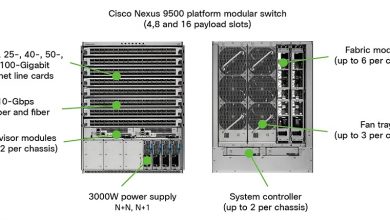A Complete Guide to Understanding Code Verification Static Analysis

Coding is a difficult job as it requires a lot of effort and a high level of focus. Moreover, as coding can be complex, completing it on time might become daunting. Furthermore, coding requires the developers to follow proper guidelines and the chance of doing wrong programming is never an option.
It is the reason why development teams employ static analysis tools. Static code analysis is a method of troubleshooting a program that involves reviewing its source code before running it. Developers do it by comparing the code set to encoding rules.
This form of analysis identifies and corrects flaws in the source code that might lead to vulnerabilities. Developers can also do it by manually inspecting the code. However, using an automated tool is far more efficient.
Process of Statistic Analysis
When automated, the static analysis method is quite simple. Developers typically conduct static analysis before software testing in the early phases of development. It occurs during the creation phase in development approaches.
After you have written your code, you must run the static code analyzer to inspect it. Examine standard or custom rules and compare them with encoding rules. When the developer runs the code through a static code analyzer, the analyzer will validate that it follows specified rules.
Because software can sometimes signal false positives, it’s critical that someone checks and rejects the codes if there is any problem.
After resolving the problem in the code, the developers can execute the code for testing. Static analysis is a lot of effort without code testing tools because people must look at your code and figure out how it will behave in the runtime environment. Therefore, it is best to discover a solution that automates this procedure.
Benefits of Using Static Analysis Tool
Static code analysis tools offer various advantages, especially if the developers follow industry standards. The finest static code analysis tools are fast and accurate. Following are a few benefits of using static tools that you might want to know.
Static Tools Improve Your Speed
Developers require time to review the codes carefully. However, they can complete the job faster if they use automated tools. Static code reviews identify and resolve errors at an early stage. It also pinpoints the location of the issue in your code. Moreover, it will help you to address these issues more rapidly. It also corrects early coding faults at a cheap cost.
Static Tools Perform the Depth Analysis
Tests cannot cover all conceivable code execution pathways. However, using a static code analyzer can cover all paths. As you work on the build, double-check your code. You can obtain a thorough analysis of where there could be a possible problem based on the rules you apply in your code.
Static Tool Increases the Accuracy
Human mistakes can occur during manual code reviews, and there are no automatic tools available to avoid such errors. However, using static tools allow you to examine every line of code for potential flaws. Moreover, it assists you in ensuring that you have the best quality code available before you begin testing. After all, when it comes to achieving coding requirements, quality counts. Therefore, using a code verification static analysis tool can prove helpful.
Types of Statical Analysis
The static analysis evaluates source code without running it. Moreover, it provides information on the model’s structure, data and control flow, and other things. There are numerous sorts of static analysis types that you can use.
Control Flow Statical Analysis
You can examine your code’s control structures through the control flow statical. It identifies improper and inefficient configuration and indicates unreachable code that control cannot reach.
Data Statical Analysis
Data statical analysis ensures that the developers are performing. Furthermore, this method ensures that the given data is utilized correctly. Methods for data evaluation include facts dependence and facts-go with the drift evaluation.
Data dependence is critical for evaluating the correctness of synchronization across several processors. Dataflow evaluation verifies variable definitions and references.
Fault Statical Analysis
It evaluates the model for flaws and mistakes. The input-output transition description in this method helps discover the conditions that produce the error. The developers check the design parameters of the model to identify failure under scenarios.
Interface Statical Analysis
It checks and validates interactive and distributed simulations to verify software codes. Model interface analysis and user interface analysis are the two fundamental methodologies for interface analysis.
Model interface analysis evaluates submodule interfaces and assesses if the interface structure is proper. The user interface model gets examined, and the developers take steps to avoid problems when the user interacts with the model gets verified.
This strategy is likewise concerned with the accuracy of integrating the Global simulation and model.
Choosing Static Tool
You can keep in mind the following while selecting the best statistic code analysis tool.
Language of the Program
You can use a wide range of computer languages for coding. Therefore, it is critical to select a tool that supports your language.
Standard of the Program
One of the most common applications for a static analyzer is standard compliance. So, if you work in a regulated field with a coding standard, be sure your product supports it.
Vendors Providing Static Analysis Tool Services
There is much static verification equipment available, so picking the right one might be difficult. Software equipment will function at a variety of levels. Moreover, technology-stage equipment will compare unit packages and overview the overall program. System-level equipment will investigate the relationships between unit packages.
Furthermore, task-stage gear will be aware of task layer words, policies, and processes. Before committing to a device, an employer must also ensure that the device supports the programming language they’re using and the specifications they must meet.
Comparison between Static Analysis and Dynamic Analysis
The distinction between static and dynamic analysis is that both types might have flaws. The primary difference is where we search for faults during the development lifecycle. Before the execution of a program, static analysis finds errors. After launching a program, dynamic codes analysis finds errors. Some coding flaws, however, may not get detected during unit testing. Therefore, there are issues that you may overlook in dynamic testing but discover in static code analysis.





